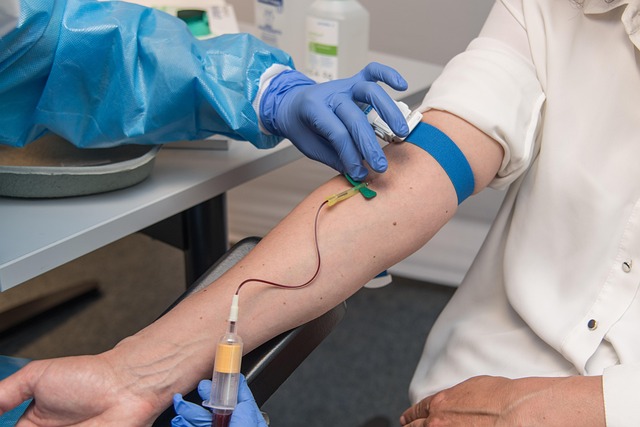Iron deficiency anemia, a common blood disorder, is caused by low iron levels, affecting red blood cell production and leading to symptoms like fatigue and shortness of breath. Home blood tests for iron deficiency in the UK offer a convenient way to monitor health, allowing individuals to check hemoglobin and ferritin levels through a simple finger prick. Results provide insights into iron status, guiding consultations with healthcare professionals who can recommend tailored treatments, from dietary adjustments to medical interventions, ensuring overall health and preventing complications like delayed growth in children.
In the UK, iron deficiency anaemia (IDA) is a common but treatable condition. If you suspect you have IDA, a UK blood test at home can provide crucial insights. This convenient method allows individuals to check for low iron levels without visiting a clinic. Understanding IDA and its symptoms is essential, as is knowing how these at-home tests work and interpreting the results accurately. By exploring these aspects, this article guides you through navigating and understanding your health with UK blood tests at home.
Understanding Iron Deficiency Anemia and Its Symptoms
Iron deficiency anemia is a common blood disorder where the body lacks enough healthy red blood cells, which are responsible for carrying oxygen to all parts of your body. This condition occurs when there’s insufficient iron—a key component of hemoglobin, the protein in red blood cells that carries oxygen—in the bloodstream. Iron is essential for producing energy and maintaining overall health.
Symptoms can vary from mild to severe and may include fatigue, weakness, pale skin, shortness of breath, dizziness, headaches, and a tingling feeling in the hands or feet. In children, it can lead to delayed growth and developmental issues. Early detection through UK blood tests at home is crucial as it allows for prompt treatment, which often involves dietary changes and iron supplements.
UK Home Blood Tests for Iron Deficiency Anemia: How They Work
In the UK, home blood tests for iron deficiency anaemia have become increasingly popular as a convenient and accessible way to monitor your health. These at-home tests allow individuals to check their blood for indicators of iron deficiency directly from the comfort of their homes. The process typically involves collecting a small sample of blood, often through a finger prick, using a kit provided by a healthcare provider or pharmacy. This sample is then analysed for levels of haemoglobin and ferritin, key markers that can reveal if there’s an iron deficiency present.
The home blood test works by measuring the concentration of haemoglobin in your blood, which carries oxygen to cells throughout your body. Low haemoglobin levels may indicate anaemia, a condition where your body doesn’t have enough healthy red blood cells to do its job effectively. Additionally, ferritin, a protein that stores iron, is tested to assess how much iron is available for your body’s use. Deficient ferritin levels can also point towards an underlying iron deficiency. Results are usually provided within days, offering individuals quick insights into their iron status and enabling them to take appropriate action if necessary.
Interpreting Results and Next Steps After a Home Blood Test
After completing a UK blood test at home, it’s crucial to understand what the results mean and the next steps to take. Interpret your results by comparing them against the reference range provided by your healthcare provider or the kit manufacturer. If your iron levels are low, it indicates possible iron deficiency anemia.
If your test reveals iron deficiency, consult a healthcare professional for further evaluation. They may recommend additional tests to confirm the diagnosis and determine the underlying cause. Based on the results, your doctor can suggest appropriate treatment options, such as dietary changes, oral supplements, or, in some cases, intravenous therapy.
Iron deficiency anemia is a common yet treatable condition, and UK home blood tests offer a convenient way to identify it early. By understanding the symptoms and utilizing these at-home testing kits, individuals can take proactive steps towards better health. With accurate results, further medical guidance becomes easier, enabling prompt treatment and management of iron levels. This accessible approach empowers folks to navigate their health with confidence.
